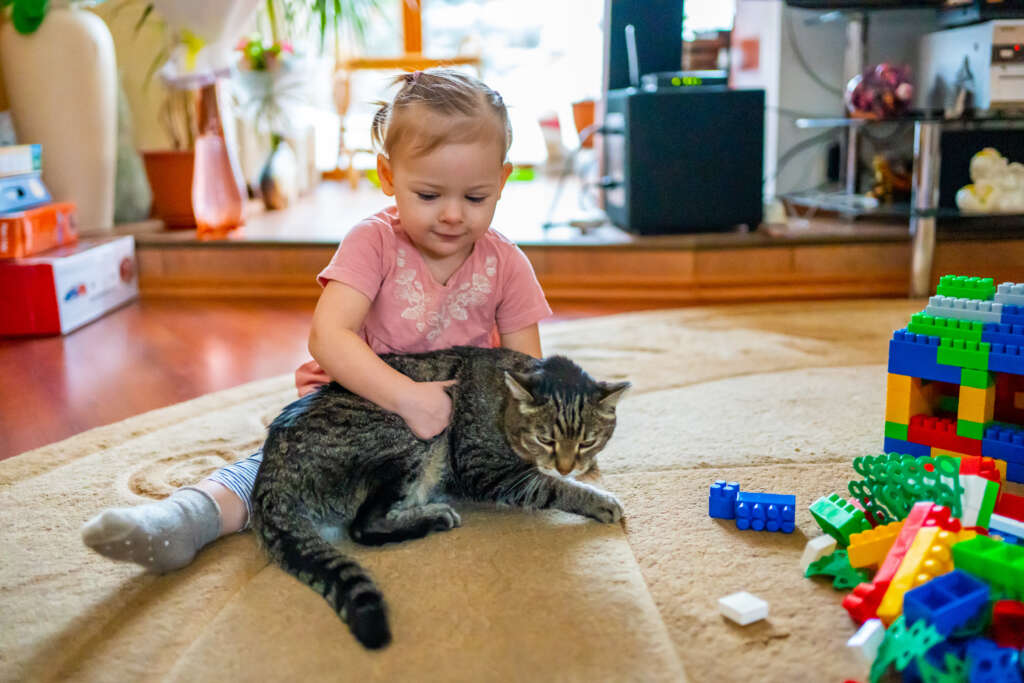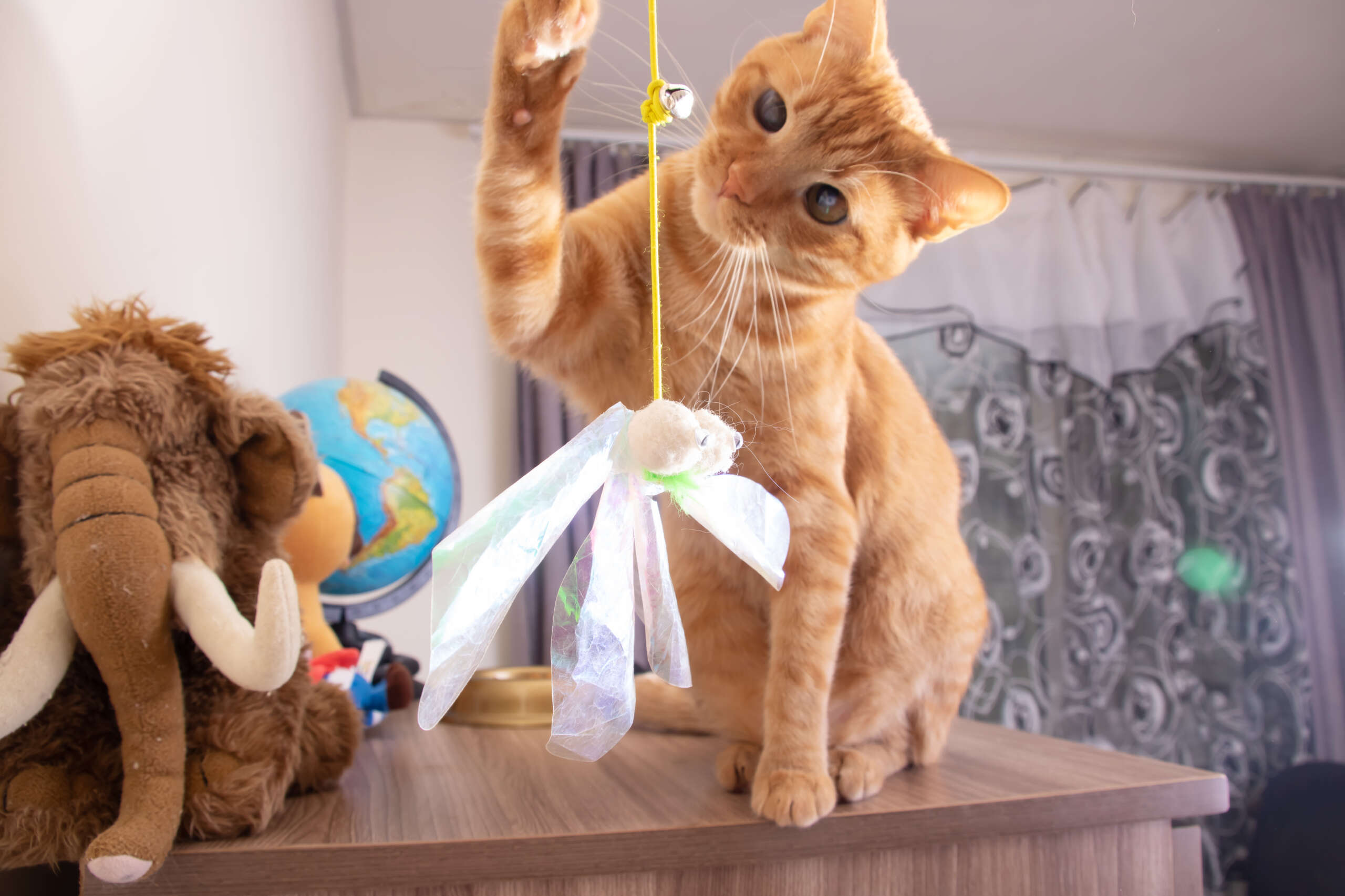Share This Article
Many think cats don’t need friends or feel lonely. But, happy cat socialization can make your cat happier. Every cat owner wants a pet that’s both happy and social. Yet, many don’t know how to make it happen.
Socialization is a skill cats learn, not something they’re born with. It’s what makes some cats love being around people and others stay away. Understanding the importance of socialization can help you and your cat have a better relationship.
But what’s needed to help cats be social with people? It’s important for both kittens and older cats. Learning about social skills can stop problems like fear or fighting over territory. Starting early is best, but it’s never too late to help your cat.
The best time to socialize kittens is between two and nine weeks old. But, it’s a long-term process that needs patience. Can older cats or those who started late still learn to be social? We’ll explore this further to help your cat have a happy life.
Understanding the Importance of Feline Socialization
Knowing why cat socialization is important is key for cat owners who want a loving bond with their pet. It’s not just about making your cat-friendly. It’s about raising a cat that can handle different places and situations. This helps prevent behavior issues that often lead to cats being given up.
The early weeks from three to nine months are the best time to start socializing kittens. These early interactions help their growth and shape their future behavior. But, it’s important to remember that cat socialization tips apply to adult cats too. Socializing them is a lifelong process that keeps them happy and well-adjusted.
Slowly introducing cats to new people and pets is crucial. This helps them learn to handle stress better. It prevents issues like aggression and house soiling, which come from fear and lack of social skills.
Being consistent and using positive rewards is key in socializing cats. Using a cattery cage lets cats get used to new things safely. So, socializing cats early helps them now and later, making them better companions and less likely to be rehomed.
Now, vets see how big of a role socialization plays in cat health. They offer tips and suggest kitten classes. This shows that socializing is key for a cat’s mind and how well they fit in. So, whether it’s for kittens or older cats, knowing why cat socialization is important is crucial.
Identifying the Prime Time to Socialize Your Cat
The key to effective kitten socialization is knowing the best time to introduce them to new things. Studies say the time between 2 to 7 weeks is crucial. This is when kittens are most open to new experiences.
It’s also important to time kitten interactions well. Behaviorists say kittens should meet many people before they are 8 weeks old. After that, they might become scared of strangers. They should meet people of different ages, genders, and backgrounds to get used to diversity.
Forty minutes to an hour of daily interaction is great for socializing adult cats. Older cats need patience and gentle care.
But when to socialize a cat isn’t just for kittens. Older cats can learn to be social too, but it takes more work. They should be introduced to new things slowly, with treats and affection to help them trust.

Genetics also affect a kitten’s behavior, so socialization should fit their personality. Luckily, even stressed kittens can adjust and do well in new places with the right socialization.
Knowing when to start kitten socialization can make cats more friendly and adaptable. The best time is early, but you can still help adult cats become more social with patience and consistency.
Socialize Your Cat with Trust-Building Strategies
Building trust with your cat is key for good cat interaction training. Start by understanding what your cat needs and likes. Cats, especially shy ones, do best in a calm and predictable place. A steady routine helps them feel secure.
Positive reinforcement is a great way to help. Giving treats or affection for good behavior teaches your cat to like being around you. This makes them more likely to act friendly and less scared or anxious. For instance, playing with your cat can make them feel more confident and happy about being around you.

Knowing how your cat feels is important for building trust. If a cat sits close or shows their belly, it means they trust you. But it’s also key to know when they need space. Respecting their boundaries helps build trust. Trying to force interaction can make them more scared and anxious.
Don’t make the mistake of punishing your cat for things they do wrong. This can make them avoid you and not trust you. Instead, reward good behavior and have a routine that makes them feel safe. Using pheromone diffusers can also make your home feel calmer, helping your cat feel more secure.
If your cat is shy or anxious, keep your home quiet and calm. Avoid loud noises and give them places to hide when they feel too much. Gentle, regular interactions can help them trust you more. This is important for a happy and loving relationship. So, using these trust-building strategies is key for cat interaction training and keeping your cat happy.
The Gradual Approach to Cat Interaction Training
Using a gradual exposure method in cat training can make your pet feel more comfortable and trusting. This method slowly introduces your cat to new things like places, people, and other pets. It helps them become more confident and less stressed. Dr. Sarah Ellis, an expert at International Cat Care, says this method is great for getting cats used to things like vet visits and learning commands.
To make playtime better, use toys that act like prey. This is key for their physical and mental health. It helps them learn important skills like hunting and solving problems. Small treats like tuna or chicken can make training fun and rewarding. Just remember to keep an eye on how many treats you give to keep your cat healthy.
Getting your cat to get along with other pets can be done by playing together and eating together. This reduces stress and makes your home a happier place. Experts say playing together and relaxing together helps pets live well together.
Don’t overfeed your cat during training. Break treats into small pieces, as Dr. Ellis suggests. Training should be short, about five minutes, to keep your cat interested. Use positive reinforcement to teach them good behaviors.

Knowing what your cat likes and needs is key to successful training. Not all cats like being handled a lot, so be gentle. If needed, use towels to help keep them calm during training.
By following these tips and understanding the importance of gradual exposure, playtime, and positive interactions, you can make training a positive experience for you and your cat.
Avoiding Common Pitfalls in Cat Socialization
As cat owners, it’s key to know how to socialize your cat right. Mistakes often come from not seeing when cats are stressed or misreading their behavior. To get it right, be patient and keep an eye out for stress signs.
Don’t rush your cat’s socialization. Most cats need to get used to new things slowly. Pushing them too fast can make them stressed, leading to bad behavior. Start slow, letting them step back if they feel too much.
Having a routine helps cats feel secure. A steady schedule for social activities like play and handling is good. This helps 76% of households with more pets feel less stressed.
It’s important to notice when your cat is stressed. Signs like tail flicking or hiding mean they’re not okay. Catching these early can stop bigger problems later.
Positive reinforcement is powerful. Using treats or playtime makes cats trust and feel good about new things. This helps 87% of owners build a strong bond with their cats.
By knowing these tips, cat owners can help their pets become friendly and well-adjusted. It’s all about understanding your cat and making them feel safe and happy.
Real-Life Cat Socialization Success Stories and How They Can Inspire You
In the world of feline welfare, cat socialization success stories often start with dedication and love. For example, in autumn 2020, a Trap-Neuter-Return (TNR) program faced many challenges. The program had to deal with deer ticks and other issues to trap a pregnant cat.
This shows how big the problem of breeding in feral colonies is. It also highlights the need for ongoing efforts to manage and socialize cats.
Angry, a mother cat, and her kittens living under a shed show that even feral cats can change. Trapping multiple cats is hard, but it can lead to big rewards. Parsley, one kitten, was hard to socialize but eventually changed for the better.
This shows how commitment and positive reinforcement can lead to big changes in cats.
Success in cat socialization isn’t just about getting them adopted. Ebby, a cat with health issues, got the care she needed. This shows how important medical care is for socializing cats.
Platforms like Instagram share these inspiring stories. Julia, a cat advocate, shares her journey and dreams of being a shelter vet. Her stories teach us about the power of care in making cats well-socialized.


